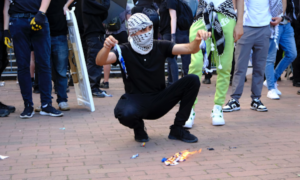Few knew what the acronym DACA stood for before the February 14, 2017 detention of then 23-year-old Daniel Ramirez Medina following his arrest in his father’s Des Moines, Washington home. But for 800,000 youth in the US, it has been an important pseudo life-line since 2012 when it was introduced by President Obama.
Deferred Action for Childhood Arrivals was a form of temporary relief from deportation for undocumented youth who came to the U.S. before the age of 16, resided in the U.S. since June 2007 and met many other requirements. In Washington, approximately 18,000 undocumented youth are DACA recipients and the City of Seattle estimates about one-third to one-half of them live in Seattle-King County.
Along the 2016 campaign trail, Trump promised it would be a day one priority to rescind. After his election, President Trump began a slow assault on immigrant communities across the country. The first shock wave centering right here in Washington with Daniel Ramirez.
“I was supposed to be one of the lucky ones,” Ramirez said in a Washington Post article during his incarceration, “Like all ‘dreamers,’ I gave all of my personal information and fingerprints to the government to qualify for DACA. I’ve been checked against every state and federal database. They verified twice that I have no criminal history, was never affiliated with any gang and was not a threat to public safety.” Nonetheless he was still confined to the Northwest Detention Center in Tacoma, and interrogated about his gang relationships.
Sahira Barajas has been the “Dreamers/Undocumented Students Support Navigator” at Seattle Central College for a little over a year, a position created to streamline the task of providing support for undocumented students enrolled at SCC. Staff, faculty and administrators have been offering support for years, but the creation of a single position, with the aid and help of the the Undocumented Students Support Team (formerly the “Dreamers Taskforce”) has made the work more clear and Barajas able to support a larger amount of students. The number of students requesting support does not seem to have recently increased.
“What has increased, is the demand for information due to the threats and actions of the Trump Administration,” according to Barajas.
Off campus, organizations such as Northwest Detention Center Resistance have been fighting for immigrant rights from another angle. According to their website, they are “a grassroots undocumented led movement that works to end the detention of immigrants and stop all deportations.” Their most outspoken activist, who now faces deportation herself, is immigrant-rights activist Maru Mora Villalpando. Villalpando has said, “People don’t think of Washington as a deportation state, but it is,” and it’s hard to argue when, according to an ICE info-graphic, nearly 4,000 people were removed from the Washington State area in 2017 alone.
These deportation numbers effect entire communities of people, not just those facing deportation themselves. Groups like the NWDCR fight those deportations and the systems that create the framework, while groups like the Undocumented Students Support Team here at Seattle Central have more of a resource and development orientation. When asked about help she has received, Barajas said, “I have been able to accomplish so much in a short period of time, because of all of the amazing work and support I have received from the Undocumented Student Support Team, and the campus community.”
With these structures in place, and the continued commitment from the City of Seattle to be a welcoming city, it’s possible a push back against the repeal of the rights of the undocumented here in this country could make this city a true sanctuary, and a place free from the fear that people like Villalpando and Ramirez have faced. But, this trend of solidarity and support work will only continue if both SCC and the City of Seattle continue to keep their commitments to those doing the ground work, like Barajas and Villalpando.











